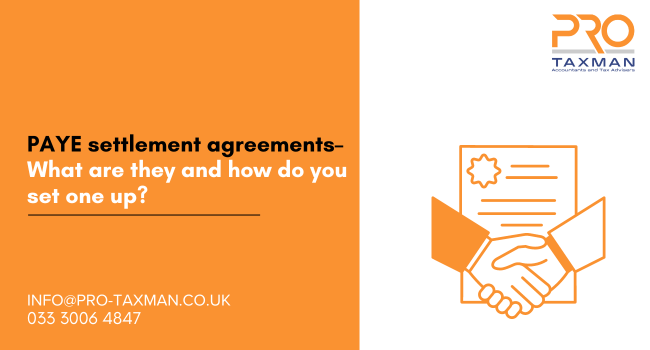The usual method of declaring employees’ benefits in kind and taxable expenses is via the annual P11D form submission. Employers can also ‘payroll’ these benefits and expenses instead, although completion of a P11D(b) for declaring National Insurance is required.
However, not all employers want their employees to pay tax on those benefits and this is where PAYE settlement agreement (PSA) come in. This may be as a goodwill gesture, or simply as a way of easing the administrative burden of reviewing what may be a large number of minor benefits. By entering into this formal arrangement, the employer agrees to settle the tax on the employee’s behalf by one annual submission and payment to HMRC. A PSA remains in place unless varied or cancelled by the employer or HMRC. Although there is a legal framework for the detailed calculation of the tax payable, it is open to the employer and HMRC to agree on one method of calculation covering all items involved.
Importantly, as the tax payment on the employee’s behalf is itself a benefit, the tax is payable on the grossed-up value of the benefit; this means that the total tax bill will be higher than if the employees had paid the tax themselves. When a paye settlement agreement is agreed, Class 1B National Insurance contributions replace any Class 1 or Class 1A National Insurance contributions liability attached to the benefits and expenses in the agreement and are payable on the total amount payable.
Some company benefits may be small (‘trivial’) being covered by the trivial benefits exemption and as such are not taxable. Other benefits may be minor but taxable (e.g. telephone bills, small gifts and vouchers, staff entertainment such as a ticket to an event and non-business expenses when travelling overnight on business which exceed the daily limit) and are therefore ideal to be included in a PSA. Other benefits covered by a PSA may be those that are irregular in nature (e.g. qualifying relocation expenses in excess of the £8,000 tax-free limit, the cost of attending an overseas conference, the expenses of a spouse accompanying an employee on a business trip abroad or the use of a company holiday flat). Many PSAs are used where it is impracticable to calculate the benefit’s value (e.g. where a group of employees is provided with benefits with no fixed value such as shared taxis home which do not qualify for the late-night taxi exemption). PSAs are also used to include payments for those who have previously been treated as self-employed and reclassified as employees.
Another advantage of a paye settlement agreement is a reduced exposure to penalties and interest by allowing a review at the end of the year to ensure that all taxable items have been accounted for.
What tax rate should be used?
The value of the benefits provided are taxed at the marginal tax rates of each employee concerned. Importantly, it is necessary to consider the tax rates applicable to employees resident in each of the countries of the UK, since the devolved governments can set their income tax rates separately.
Practical point
HMRC requests PSA calculations to be submitted annually by a certain date, which can differ by agreement but is typically 31 July or 31 August. However, there is no statutory deadline for the submission, so no penalties can be imposed for failure to submit by this date.
Payment must be made by 19 October (or on or before 22 October if paying electronically) following the end of the relevant tax year.
Need professional accounting service or tax advice? Contact us to book a 15-min Free Consultation with us today.
To find out more please follow us on Facebook, Twitter, or LinkedIn. Feel free to contact us on 0333 006 4847 or request a call back by texting 075 6464 7474

